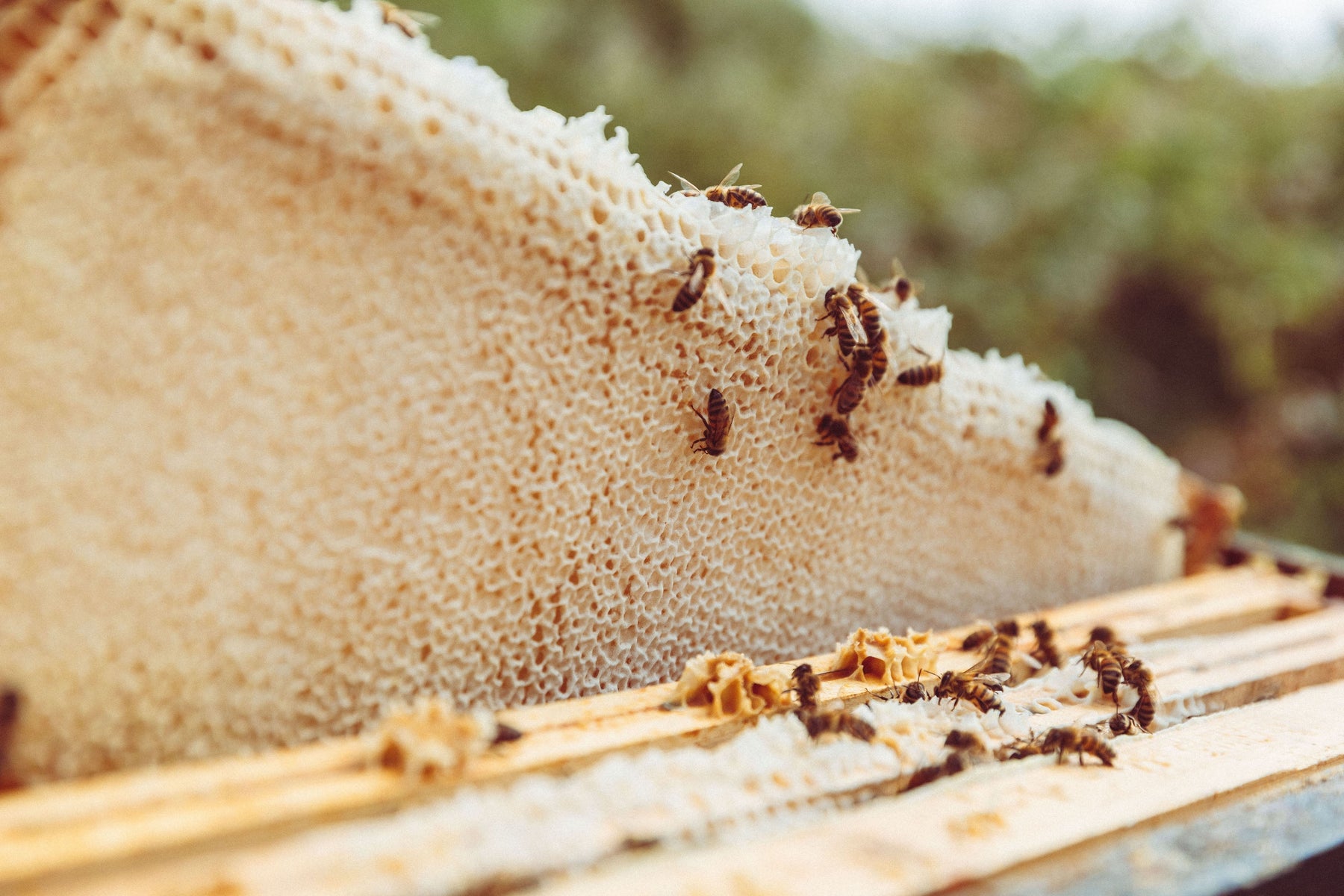
BEE FARMING: Our Seasonal Harvest Update
2025 has been quite a year for record temperatures and exceptional circumstances. Spring, being the warmest and sunniest on record, followed by the warmest June ever recorded in England.
It delivered for the bees, who thrived in the warm sunshine and early seasonal flora - from Kent hawthorn to Shropshire hedgerows - producing a wonderful spring honey harvest across the countryside for us.
Witness the beautiful, clean frames of fresh honeycomb above, taken on location at our Kent beach apiary earlier this spring.
The year was off to a great start.
Yet, it's not all been good news. The warm weather has brought challenges for farming on many levels, in particular drought; the lack of rain affecting many crops, reducing harvest and impacting on the available feed, normally reserved for winter months.
The impact has been felt by farmers who specifically grow borage for its medicinal and seed purposes, and who rely on the symbiotic relationship of the bees.
A few heavy rain showers enabled some quick thinking in a few locations, with timing and responsiveness vital to success. Where many beekeepers have reported no seasonal borage honey this year, we are delighted to have brought in a harvest, not as abundant as 2024, but we are grateful all the same.
Summer is by no means over yet, but you will have noticed in your own garden or simply around you that the summer flora has gone over a little earlier than normal. Our parks and grasslands are dry and dusty, which has meant a shorter season for the bees as the nectar sources have literally dried up.
Our planning and resourcefulness has been more challenged than ever, our obsession with the weather only intensified this year. It’s been a tough one, so we take some delight at the seasonal summer harvests that we have successfully achieved, from London, to the south coast, to the rolling Cotswolds and beyond.
We’ve undertaken our annual migration to the high heather moors already - the bees are in position - in carefully sourced locations to ensure they thrive on the colourful, available nectar. Yet this hasn't been without its challenges, due to the drought but also the challenges of the heather beetle.
Heather beetle (Lochmaea suturalis) is posing a significant threat to the UK’s moorlands. It has been grazing on heather for thousands of years, however, in recent times, outbreaks have become more intense, causing widespread damage and raising concerns about the health of our heather moorlands, stripping them of this distinctive flora.
And such is the nature of farming.
No season, no year is ever the same. We adapt, and we evolve, we work with nature to find new ways and solutions.
